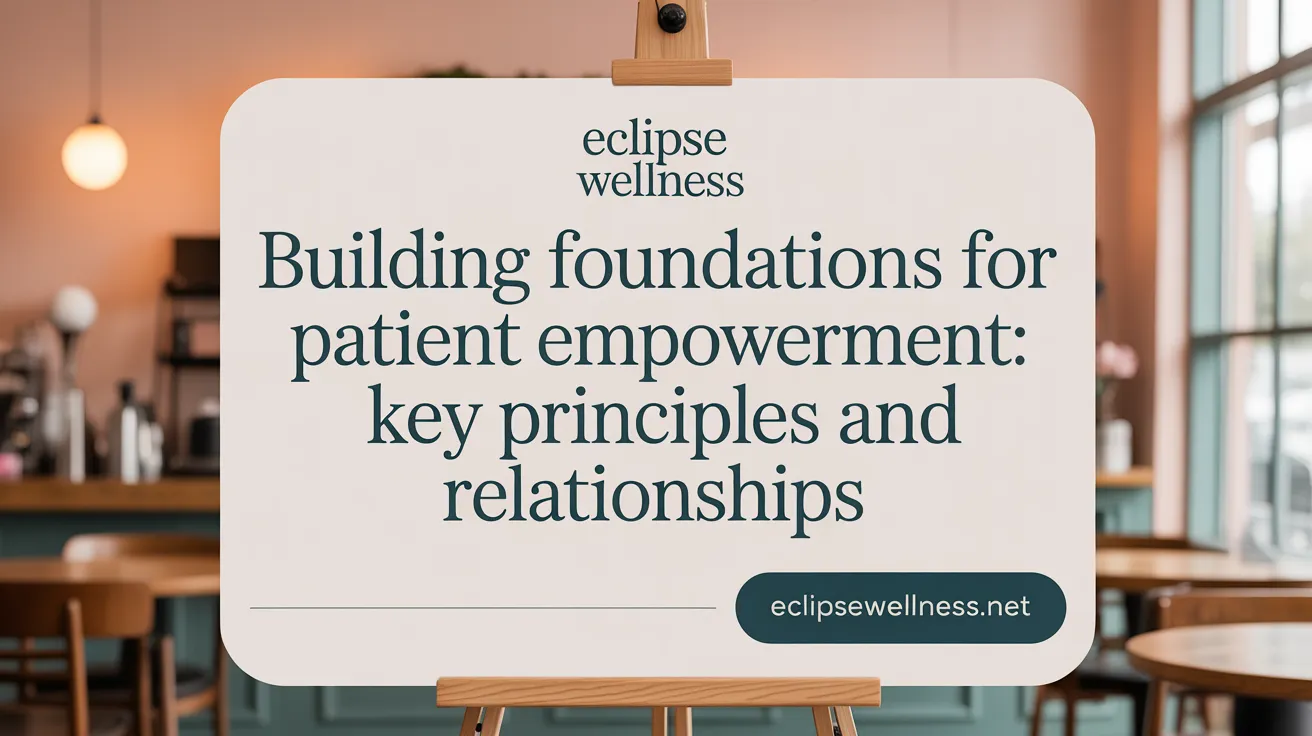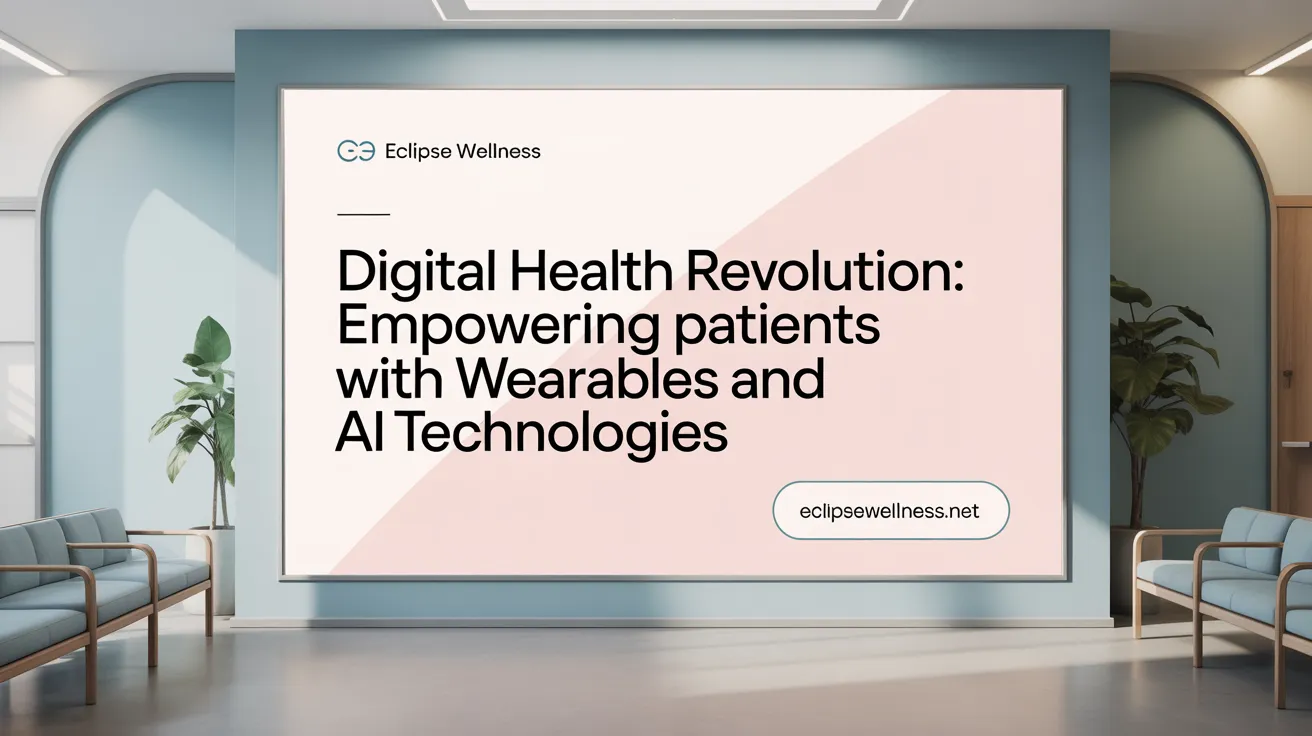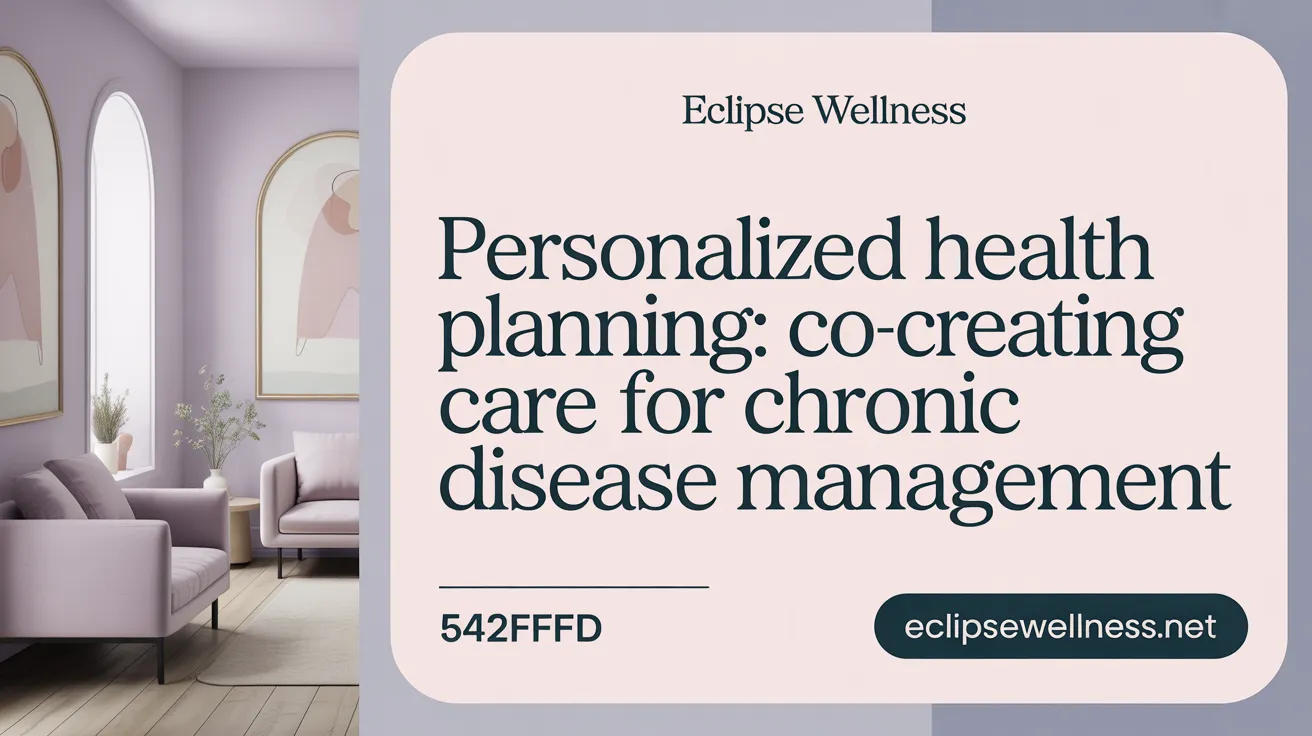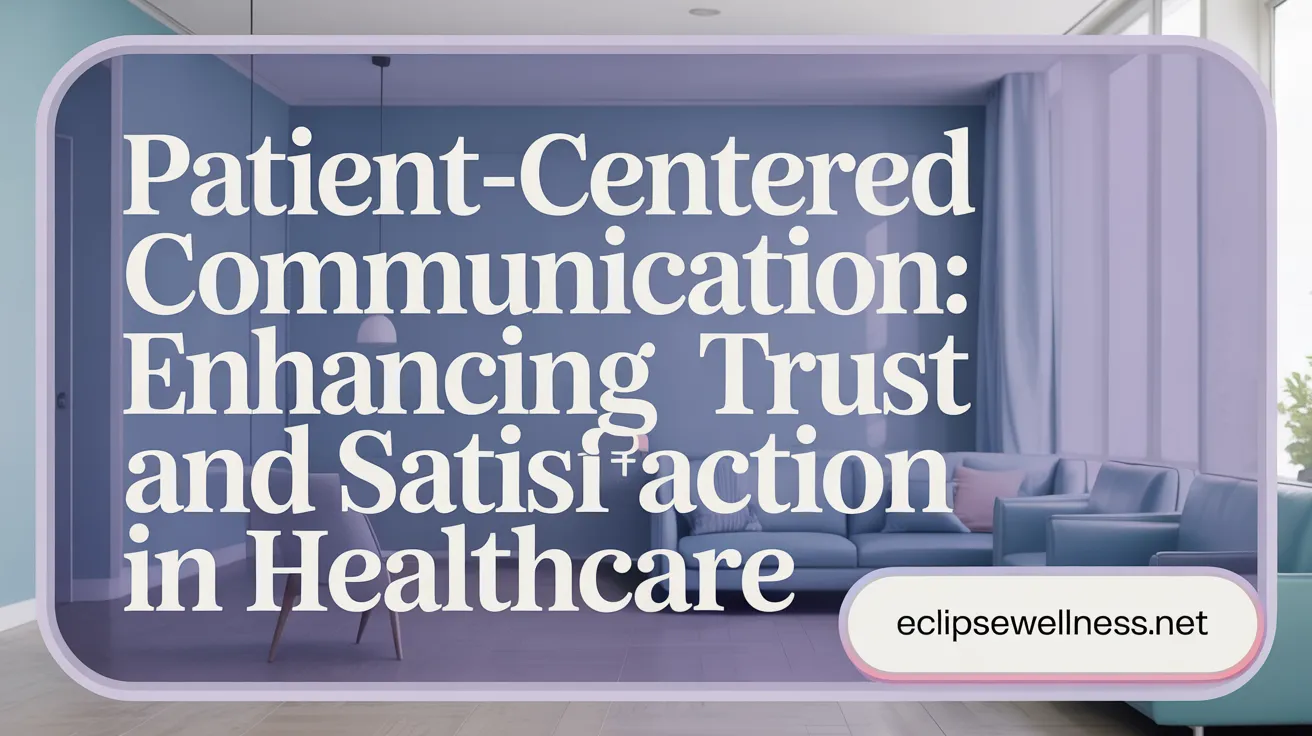Rethinking Healthcare for the Individual
In an era where technology and medicine intersect, healthcare is undergoing a profound transformation focused on empowering patients through tailored solutions. Moving beyond traditional one-size-fits-all models, personalized healthcare integrates advanced diagnostics, digital innovation, and patient-centered philosophies to provide care that aligns with individual needs, values, and lifestyles. This shift not only fosters deeper patient involvement but also enhances outcomes, reduces costs, and redefines the doctor-patient relationship as a dynamic partnership.
The Foundations of Patient Empowerment in Modern Healthcare

What defines patient empowerment and why does it matter?
Patient empowerment is a healthcare philosophy that champions the patient's active role in managing their own health. It is built on four essential pillars: access to information, ease of healthcare access, active patient engagement, and the agency to participate in decisions. This approach shifts the traditional dynamic, encouraging patients to become co-managers of their care rather than passive recipients.
Empowered patients tend to follow medication regimes more faithfully and display better clinical outcomes, especially in chronic disease management. This involvement also fosters cost savings and enhances satisfaction for both patients and healthcare providers by encouraging informed, collaborative care decisions (Why Patient Empowerment Matters).
How does empowerment influence the patient-provider relationship?
Empowerment transforms the patient-provider dynamic into a true partnership grounded in mutual respect and trust. When patients are knowledgeable and confident, they engage in open, honest communication with their healthcare teams. This collaboration promotes shared decision-making, aligning treatment with patient preferences and values (Patient-centered care principles).
Such strengthened relationships not only elevate the quality of care but also improve patient satisfaction and adherence to treatment plans. Patients feel heard and valued, which leads to better health management and overall outcomes (Patient empowerment and collaborative healthcare).
Overall, patient empowerment is a foundational aspect of modern healthcare, fostering improved health results and collaborative care environments (Digital health and patient empowerment).
Technological Catalysts: Digital Health and Wearables as Empowerment Tools

How have digital technologies transformed patient empowerment?
Digital health technologies have revolutionized patient empowerment, especially in the wake of the COVID-19 pandemic. Tools like wearable devices (e.g., Apple Watch, Fitbit) and remote monitoring systems enable patients to continuously track vital signs such as heart rate and sleep. This real-time feedback encourages healthier behaviors and allows patients to stay actively involved in their health management (patient empowerment.
Artificial intelligence (AI) and machine learning enhance diagnostics by analyzing complex data, leading to early disease detection and personalized treatment plans. For example, AI can integrate genetic, metabolic, and physiological information to tailor care uniquely to each patient’s needs (personalized treatment plans). Telehealth expands access to healthcare, enabling consultations and monitoring without in-person visits, which reduces virus transmission risks.
What challenges and opportunities do these technologies present?
Challenges:
- Data privacy concerns over patient information.
- System interoperability barriers that complicate integration across devices and health records.
- The digital divide, limiting access for some populations.
- Regulatory uncertainties surrounding new technologies.
Opportunities:
- Personalized healthcare with custom plans based on continuous data.
- Increased patient engagement and agency through accessible health information.
- Enhanced healthcare efficiency by reducing unnecessary hospital visits.
- Expanded telehealth capabilities for remote care continuity.
Importance of digital health literacy
To fully harness these technologies, digital health literacy must improve so patients can effectively access, understand, and use health information. Educated and digitally skilled patients can better participate in shared decision-making and maximize the benefits offered by digital health tools.
Overall, digital health and wearable technologies serve as powerful catalysts that redefine patient empowerment by fostering collaboration, personalization, and proactive care.
Tailored Healthcare Solutions: Customizing Care Across Populations

What is patient profiling and how does it enable tailored care?
Patient profiling involves evaluating a patient's unique biological, psychological, and social traits to categorize them into subgroups with similar healthcare needs and preferences. This biopsychosocial stratification allows healthcare providers to design and deliver care plans precisely aligned with each subgroup's characteristics. For instance, in chronic condition management, patient profiles can guide treatment adjustments that account for clinical markers like body mass index or metabolic control. For more on Patient profiling in healthcare.
Examples of tailored care in chronic disease and specialized procedures
Two distinct approaches illustrate effective patient profiling:
- Type 2 Diabetes Management: Using data on patients' baseline body mass index, HbA1c, and triglycerides, clinicians predict glycemic control patterns through machine learning models. Care strategies are then personalized, improving disease trajectory. Learn about Tailored healthcare for type 2 diabetes patients.
- Total Joint Replacement: Patient experiences and preferences regarding pain, communication, and stress are analyzed using cluster analysis and qualitative interviews. Care delivery is customized to these profiles, enhancing recovery and satisfaction. Details on Tailoring care based on patient profiles.
What are the benefits of aligning care with patient preferences and characteristics?
Tailored healthcare optimizes the patient experience by respecting personal preferences and addressing individual health risks. This personalization promotes better adherence to treatment plans and supports self-management. As a result, patients are more engaged and satisfied. Explore benefits of Personalized health care and Patient-centered care principles.
How does tailored care improve healthcare delivery?
By delivering the right intervention to the right patient at the right time, tailored care reduces ineffective or unnecessary treatments, leading to improved clinical outcomes. This approach also helps contain healthcare costs by preventing complications and hospital readmissions. Ultimately, tailoring care based on patient profiles fosters efficient resource use and enhances overall healthcare quality. Learn more about Tailored healthcare solutions and Personalized medicine benefits.
Personalized Health Planning: Collaborative Proactive Care

What comprises a personalized health care plan?
A personalized health care plan is a comprehensive approach designed to tailor medical care to the individual needs of patients. It begins with thorough health risk assessments that include both patient self-assessment and clinical evaluation. Following these assessments, patients and healthcare providers collaboratively set health goals. These goals are then integrated into a customized plan that coordinates care efforts among providers, emphasizing patient empowerment and active participation.
Why is personalized health planning vital for managing chronic diseases?
Personalized health planning plays a crucial role in managing chronic conditions by encouraging proactive behaviors. Patients are supported in adhering to medication regimens and adopting lifestyle changes such as improved nutrition, regular physical activity, and stress management. This approach promotes early intervention strategies that can prevent disease progression. By shifting the focus from reactive symptom treatment to wellness and prevention, personalized health planning enhances overall care quality (early detection and prevention).
Steps involved in personalized health planning
- Self-Assessment: Patients evaluate their health status, lifestyle, and risks.
- Clinical Assessment: Healthcare providers conduct examinations and diagnostic testing.
- Shared Goal Setting: Patients and providers agree on health objectives tailored to individual needs.
- Plan Integration: Developing a cohesive care plan that merges clinical insights with patient preferences.
- Care Coordination: Ensuring continuity and collaboration among healthcare professionals and support systems (care coordination and shared goal setting.
Impact on care approach
This collaborative framework encourages a shift from reactive, disease-centric care to proactive, wellness-focused care. It recognizes the importance of early detection and prevention in reducing the burden of chronic diseases. Empowering patients to take charge of their health through personalized plans enhances patient engagement and ultimately improves health outcomes.
Patient-Centered Care and Communication: The Heart of Empowerment

What is patient-centered care and how does it relate to empowerment?
Patient-centered care is a healthcare approach that focuses on respecting and responding to each patient's unique preferences, needs, and emotional and social circumstances. It actively involves patients and their families in shared decision-making, fostering a collaborative partnership with providers. This approach nurtures patient empowerment by building mutual respect, trust, and cooperation, enabling patients to play a central role in managing their health and treatment.
What are the key principles of patient-centered care?
The Picker Institute outlined eight essential principles that define patient-centered care:
- Timely access to care and healthcare professionals
- Trust in providers’ competence and integrity
- Effective, clear communication tailored to patient understanding
- Emotional support to alleviate anxiety and concerns
- Respect for patient values, preferences, and cultural backgrounds
- Physical comfort including pain management and environment
- Inclusion of family and caregivers in care and decision processes
- Continuity and coordination of care during transitions
These principles are well described in The Eight Principles of Patient-Centered Care.
How does effective communication enhance patient experience?
Effective communication—both verbal and nonverbal—supports high-quality healthcare by fostering strong therapeutic relationships. Techniques like active listening, eye contact, facial expressions, and clear, jargon-free explanations improve patient understanding and health literacy. This enhances patients' confidence to engage in self-management and follow treatment plans, contributing to increased satisfaction, trust in providers, and better health outcomes. For more on tailored communication for patients, see Quality communication in healthcare.
Why is emotional support and family engagement important?
Addressing emotional needs through empathy and reassurance reduces patient anxiety related to illness and treatments. Involving family members ensures patients have a supportive network and shared understanding of care decisions. Family inclusion also aids in meeting patients' social and emotional needs, strengthening the overall care experience and promoting adherence to medical advice. This aspect is discussed in The Nurse's Role in Patient-Centered Care.
What impact does patient-centered care have on satisfaction, trust, and health outcomes?
Studies link patient-centered care to improved satisfaction due to patients feeling heard, respected, and valued. Trust between patients and providers is strengthened, which promotes open dialogue and collaborative decision-making. Consequently, health outcomes improve with better adherence to treatments, timely interventions, and reduced unnecessary hospital visits or tests. Providers also benefit from enhanced efficiency and professional fulfillment by focusing on patient needs. Detailed insights can be found in Patient-Centered Care Benefits.
Patient-centered care and respectful communication form the foundation of patient empowerment, transforming healthcare experiences into partnerships that prioritize individual well-being and shared goals, as further elaborated in Empowering Patients and Transforming Healthcare.
Health Care Navigation and Administration: Supporting Empowered Patients
How do healthcare navigation and benefits administration empower patients?
Healthcare navigation and benefits administration play a vital role in empowering patients by demystifying complex healthcare processes. They simplify insurance claims, billing, and benefit usage, enabling patients to access care more easily and make informed decisions about their health. By reducing administrative burdens, these services help patients focus on their well-being and treatment rather than paperwork. For more information on how such services support individuals and families, see Healthshare Plans for Individuals and Families.
What tailored administrative solutions support diverse client needs?
Health Admins provides a suite of customized administrative solutions designed to meet the unique needs of different clients. These include:
- For Individuals and Families: Custom healthshare plans and bill negotiation services that make healthcare more affordable and accessible.
- For Employers and Small Businesses: Tailored health plans, third-party administrator (TPA) services, and compliance management designed to streamline benefits administration and reduce organizational complexity.
- For Large Corporations and Healthcare Providers: Comprehensive benefits administration, TPA software, claims processing, and healthcare navigation tools to enhance operational efficiency.
Health Admins’ offerings align with Customized Health Plans for Employers and Compliance Support to ensure diverse client needs are met effectively.
Reducing complexity in billing and compliance management
Tailored administrative solutions address the challenges of billing disputes and regulatory compliance by offering expert navigation and negotiation support. These services integrate technology-driven platforms for claims and eligibility tracking, ensuring accurate, timely processing and adherence to legal requirements. This minimization of administrative complexity ultimately translates to faster, clearer transactions for patients and providers. The integration of such solutions corresponds with the benefits of TPA Software and Claims Processing Support in improving healthcare operations.
Impact on patient experience and system efficiency
By delivering personalized and scalable administrative support, these services improve the overall patient experience, promoting satisfaction and trust. Streamlined benefit management decreases unnecessary delays and errors, while enabling healthcare providers and employers to focus resources on quality care and employee health. The result is a collaborative healthcare environment where empowered patients receive timely, coordinated care grounded in transparency and support, as further discussed in the context of Patient Empowerment and Healthcare Navigation Services.
Culturally Sensitive Personalized Interventions and Equity in Empowerment
Why is cultural sensitivity important in patient empowerment?
Cultural sensitivity plays a crucial role in patient empowerment by ensuring that interventions respect diverse patient backgrounds and communication styles. When healthcare approaches are culturally tailored , patients remain engaged and involved in their care. This decreases health disparities and promotes inclusion, as patients feel understood and valued within the healthcare system. Culturally sensitive care acknowledges the unique beliefs, traditions, and needs of each individual, fostering trust and collaboration which are vital for empowering patients effectively.
How do policy reforms support personalized patient activation?
Policy reforms have significantly bolstered personalized patient activation by increasing healthcare access and promoting integrated care models. For example, the Affordable Care Act (ACA) expanded insurance coverage, particularly among previously uninsured populations, which enhances patient engagement by reducing financial barriers. The ACA also supports innovative healthcare frameworks like Patient-Centered Medical Homes and Accountable Care Organizations, which emphasize shared decision-making and community health resources. These reforms encourage healthcare providers to collaborate closely with patients, focusing on culturally relevant communication and personalized care strategies that nurture patient empowerment.
Multi-level frameworks involving patients, providers, community, and systems
A comprehensive approach to patient activation involves multiple layers:
- Individual level: Educating and activating patients in managing their health.
- Healthcare professionals: Training providers to deliver culturally competent care and support shared decision-making.
- Community level: Leveraging community resources to provide culturally appropriate support and health literacy programs.
- Healthcare systems: Implementing policies and infrastructures that enable continuity of care and integration of culturally tailored services.
Such frameworks facilitate equitable empowerment by addressing diverse factors that influence patient engagement.
Addressing health disparities and enabling shared decision-making
Efforts to reduce health disparities focus on tailoring care to patient cultural preferences and social backgrounds. Enabling shared decision-making ensures patients participate actively by discussing options that reflect their values and circumstances. This not only improves treatment adherence and satisfaction but also addresses systemic inequities by validating patient voices and removing barriers to quality care.
The Future of Tailored Healthcare: Integrating AI, Genomics, and Patient Voices
How does personalized medicine transform healthcare?
Personalized medicine revolutionizes healthcare by customizing treatments to the individual’s unique genetic, metabolic, and clinical profiles. This precision approach moves away from one-size-fits-all therapies, enabling safer and more effective interventions tailored to each patient's needs. For example, pharmacogenomics allows doctors to select medications based on genetic testing, avoiding adverse reactions and improving outcomes.
Moreover, personalized medicine shifts the focus toward prevention and early intervention, utilizing techniques like biomarker detection and genomic profiling to identify disease risks before symptoms appear. This proactive stance reduces the trial-and-error method historically common in treatments, enhancing patient safety and potentially lowering healthcare costs (What is Personalized Medical Care).
What role do patients play in shaping future healthcare?
Patients today are no longer passive recipients of care; they are active partners shaping the evolution of healthcare. Through increased access to digital tools, wearable devices, and online platforms, patients contribute valuable data and insights that influence research, treatment planning, and innovation.
Initiatives such as Health 5.0 highlight the role of empowered patients in co-creating wellness solutions, blending technological advancements with patient preferences. Patient-driven innovations like the DIY artificial pancreas system exemplify how individuals take control, developing tailored health technologies to manage chronic conditions more effectively.
Integration of genomics with AI and machine learning for precision care
The integration of genomic data with AI and machine learning fosters breakthroughs in precision healthcare. AI algorithms analyze complex genetic and biological information to identify disease patterns, predict responses to treatments, and tailor care pathways.
This synergy enables continuous learning from vast patient datasets, refining personalized treatment plans continuously. Machine learning models can also forecast disease progression, enabling early interventions, especially crucial in chronic illnesses.
Emerging digital tools enhancing autonomy and chronic disease management
Digital health tools like continuous glucose monitors, smartwatches, and telehealth platforms empower patients by offering real-time health feedback, fostering self-management of chronic diseases (Patient empowerment redefining healthcare.
Remote monitoring technologies lessen hospital visits while maintaining continuous care, improving patient satisfaction and outcomes (Digital and Wearable Technologies. AI-driven apps provide personalized coaching and support behavioral changes through actionable insights from wearable and sensor data.
This new paradigm supports patients in managing their health proactively, improving medication adherence, lifestyle choices, and overall quality of life (why patient empowerment matters.
Empowerment as the Cornerstone of Future Healthcare
The transition toward patient empowerment through tailored healthcare solutions heralds a new paradigm in medicine—one where patients are well-informed, engaged, and active partners in their care journey. Integrating cutting-edge technologies, personalized health planning, and culturally sensitive practices ensures care is not only more effective but also aligned with individual values and lifestyles. As healthcare continues to innovate, embracing patient voices and individualized approaches promises improved outcomes, cost efficiencies, and a more humane healthcare experience for all.
